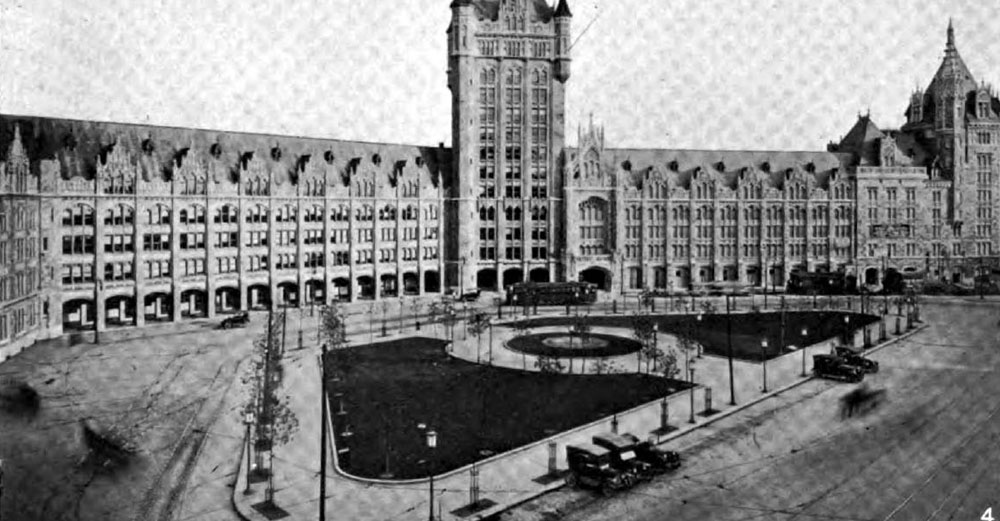
The history of SUNY officially dates back to 1948, but many of the pieces were at work before then bringing education and opportunity to New York State. After doing some research, we here at SUNY discovered that shaping history is not unique to SUNY and it’s not unique to familiar names either. Many of New York’s unsung heroes have shaped the history of this country and the world. So we thought it only right to sing their praises. These are some of the New York history-makers of whom you might not be so familiar with.
Hester C. Jeffrey
Hester C. Jeffery was a Rochester-native and an outspoken advocate for civil rights. In the Early 1890s she worked tirelessly for Rochester’s growing African-American population, founding a number of African-American women’s clubs. In 1897, Jeffrey was appointed to serve on the Douglass Monument Committee. The goal of the group was to raise money for a statue of Fredrick Douglass. Following the statue’s successful installation, Hester became a prominent civil rights figure. Jeffrey founded two women’s organizations, the Climbers and the Hester C. Jeffrey Club, and then later organized the Susan B. Anthony Club for Colored Women, serving as its first president. She was a personal friend of Susan B. Anthony (in spite of Susan B Anthony’s documented racism) and was one of several woman chosen to eulogize Anthony after her death.
Tadodaho
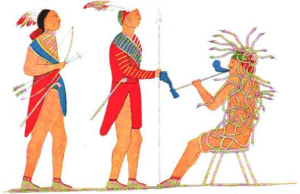 Although Tadodaho lived long before New York State was ever conceived, it is unquestionable that he had a huge impact on the history of this region. According to oral tradition, Tadodaho was a warrior to be feared. This Onondaga chief initially opposed joining the Haudenosaunee, or Iroquois Confederacy, but eventually was persuaded by the Great Peacemaker and Hiawatha to join the peaceful alliance. He was a powerful ally. Today his name is used as a term to describe the most powerful spiritual leader in New York State.
Although Tadodaho lived long before New York State was ever conceived, it is unquestionable that he had a huge impact on the history of this region. According to oral tradition, Tadodaho was a warrior to be feared. This Onondaga chief initially opposed joining the Haudenosaunee, or Iroquois Confederacy, but eventually was persuaded by the Great Peacemaker and Hiawatha to join the peaceful alliance. He was a powerful ally. Today his name is used as a term to describe the most powerful spiritual leader in New York State.
Agent 355
 The true identity of Agent 355 is still unknown to historians but her discoveries were not. During the American Revolution she worked as a spy in the Culper Ring. The Culper Ring, which was directed by General George Washington, worked to gather information on the British-occupied island of Manhattan. It is believed that Agent 355 was the daughter of an important Loyalist family and as such was privy to their lush parties. What is known is that while she was in New York she met Benedict Arnold. She’s thought to have been instrumental in uncovering his betrayal.
The true identity of Agent 355 is still unknown to historians but her discoveries were not. During the American Revolution she worked as a spy in the Culper Ring. The Culper Ring, which was directed by General George Washington, worked to gather information on the British-occupied island of Manhattan. It is believed that Agent 355 was the daughter of an important Loyalist family and as such was privy to their lush parties. What is known is that while she was in New York she met Benedict Arnold. She’s thought to have been instrumental in uncovering his betrayal.
Paul Christian Lauterbur
 Paul Lauterbur is probably not a name you hear spoken every day. He was born in Ohio but moved to New York when he became a SUNY professor. In spite of his lack of name recognition, Lauterbur made an unmistakable mark on history when his research at Stony Brook University produced the MRI. The MRI uses magnetic fields to detect issues within the body such as tumors, bleeding or infection. They are used in hospitals all over the world. Co-awarded the Nobel Prize in Physiology or Medicine in 2003, Lauterbur’s work has been saving lives since its beginning.
Paul Lauterbur is probably not a name you hear spoken every day. He was born in Ohio but moved to New York when he became a SUNY professor. In spite of his lack of name recognition, Lauterbur made an unmistakable mark on history when his research at Stony Brook University produced the MRI. The MRI uses magnetic fields to detect issues within the body such as tumors, bleeding or infection. They are used in hospitals all over the world. Co-awarded the Nobel Prize in Physiology or Medicine in 2003, Lauterbur’s work has been saving lives since its beginning.
Sybil Ludington
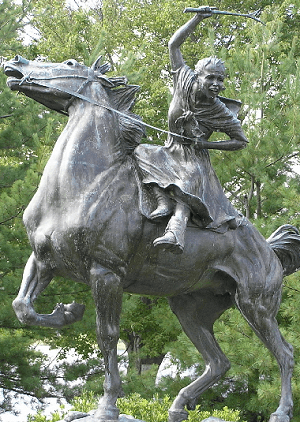 Although you’ve probably never heard of the actions of Sybil Ludington, you’ve likely heard of Paul Revere. Revere famously rode through the night to warn American Patriots of the oncoming British force. But what you probably didn’t know is that Paul Revere’s act was not unique to the time. On April 26, 1777, Sybil Ludington, who was 16 years old at the time, mounted her horse, Star, and rode off on her own “Midnight Ride” to warn local militias about oncoming British forces. As she traveled she fought off highwaymen with a long stick. She rode from Carmel to Mahopac, to Kent Cliffs, and from there to Farmers Mills before returning home. Her trip was more than twice the distance as that of Paul Revere.
Although you’ve probably never heard of the actions of Sybil Ludington, you’ve likely heard of Paul Revere. Revere famously rode through the night to warn American Patriots of the oncoming British force. But what you probably didn’t know is that Paul Revere’s act was not unique to the time. On April 26, 1777, Sybil Ludington, who was 16 years old at the time, mounted her horse, Star, and rode off on her own “Midnight Ride” to warn local militias about oncoming British forces. As she traveled she fought off highwaymen with a long stick. She rode from Carmel to Mahopac, to Kent Cliffs, and from there to Farmers Mills before returning home. Her trip was more than twice the distance as that of Paul Revere.
Alfred Ely Beach
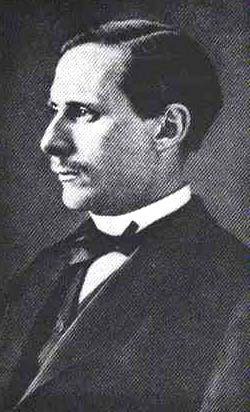 Alfred Ely Beach is the man who created New York’s first subway. It was no easy task. Although there was a massive transportation problem in the growing city of New York at the time, the underground rail system was looked on unfavorably compared to the introduction of the elevated train car. In comparison, Beach’s invention, which he touted, “A tube, a car, a revolving fan! Little more is required!” seemed a bit like an underground death-trap to some. But Beach was determined. After he was unable to obtain the necessary support for the invention, Beach built it in secret under false pretenses, claiming he was building a pneumatic mail dispatch system while building his subway in secret. A year later he revealed his invention to the public and it began to gain public support. He introduced a bill to extend his transport system all the way to Central Park. Unfortunately for Beach and fans of the train, a stock market crash caused Beach to lose investors and the New York Subway system wasn’t seen as a serious method of transportation for another 25 years.
Alfred Ely Beach is the man who created New York’s first subway. It was no easy task. Although there was a massive transportation problem in the growing city of New York at the time, the underground rail system was looked on unfavorably compared to the introduction of the elevated train car. In comparison, Beach’s invention, which he touted, “A tube, a car, a revolving fan! Little more is required!” seemed a bit like an underground death-trap to some. But Beach was determined. After he was unable to obtain the necessary support for the invention, Beach built it in secret under false pretenses, claiming he was building a pneumatic mail dispatch system while building his subway in secret. A year later he revealed his invention to the public and it began to gain public support. He introduced a bill to extend his transport system all the way to Central Park. Unfortunately for Beach and fans of the train, a stock market crash caused Beach to lose investors and the New York Subway system wasn’t seen as a serious method of transportation for another 25 years.
Maria Tallchief
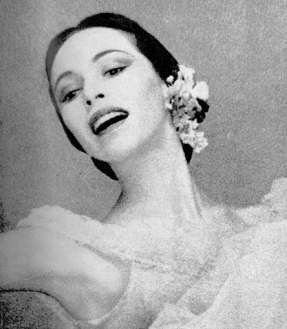 Maria Tallcheif was the first Native American to hold the title of Prima Ballerina. Born Elizabeth Marie Tall Chief, she took the name Maria Tallcheif as a stage persona when she began seriously looking for a spot on the Ballet stage. She began learning to dance at the age of 3 and when she turned 17 she moved to New York to look for a spot in a major ballet company. She quickly became a star in the ballet world and her role as the Sugarplum Fairy in The Nutcracker launched the little-know ballet into fame. Even after leaving the New York Ballet, she had a successful career dancing in Russia, Germany, and even on the Ed Sullivan Show.
Maria Tallcheif was the first Native American to hold the title of Prima Ballerina. Born Elizabeth Marie Tall Chief, she took the name Maria Tallcheif as a stage persona when she began seriously looking for a spot on the Ballet stage. She began learning to dance at the age of 3 and when she turned 17 she moved to New York to look for a spot in a major ballet company. She quickly became a star in the ballet world and her role as the Sugarplum Fairy in The Nutcracker launched the little-know ballet into fame. Even after leaving the New York Ballet, she had a successful career dancing in Russia, Germany, and even on the Ed Sullivan Show.
Ely Samuel Parker
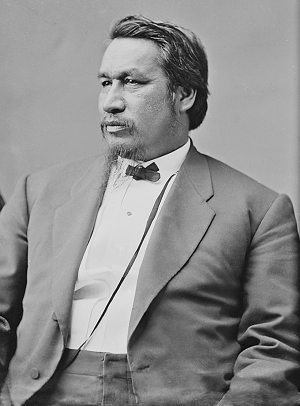 Ely Samuel Parker was a solider in the Union army during the American Civil War. He rose to the rank of Brevet Brigadier General and was one of only two Native Americans to ever rise to the rank of general during the war. Parker acted as adjutant to General Ulysses S Grant. Additionally, he wrote the final draft of the Confederate surrender terms at Appomattox. After the war he continued to have an illustrious career. In 1869, then President Ulysses S Grant appointed him head of the Office of Indian Affairs. Ironically, Ely Samuel Parker was the first Native American to ever hold this position. He became the chief architect of President Grant’s “Peace Policy” and under his leadership the number of military conflicts against Natives in the west were reduced.
Ely Samuel Parker was a solider in the Union army during the American Civil War. He rose to the rank of Brevet Brigadier General and was one of only two Native Americans to ever rise to the rank of general during the war. Parker acted as adjutant to General Ulysses S Grant. Additionally, he wrote the final draft of the Confederate surrender terms at Appomattox. After the war he continued to have an illustrious career. In 1869, then President Ulysses S Grant appointed him head of the Office of Indian Affairs. Ironically, Ely Samuel Parker was the first Native American to ever hold this position. He became the chief architect of President Grant’s “Peace Policy” and under his leadership the number of military conflicts against Natives in the west were reduced.
Claudette Colvin
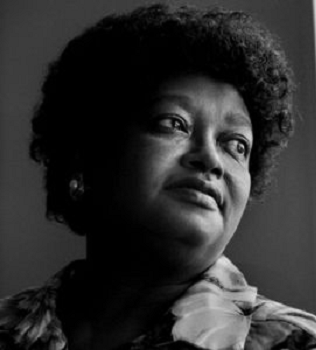 Claudette Colvin was the first person arrested for resisting bus segregation in Montgomery, Alabama. In fact, her arrest precedes Rosa Parks’ by 9 months. But the fact that Rosa Parks was publicized and Claudette Colvin was not was a deliberate choice of the civil rights movement. This is because at the time of her arrest Claudette Colvin was only 15 years old and pregnant. Leaders of the NAACP feared the backlash of using her to represent the movement. Rosa Parks, who better represented the middle-class, upright citizen, was instead chosen. Colvin remained an activist though and now lives in the Bronx. She worked as a nurses aide in New York until her retirement.
Claudette Colvin was the first person arrested for resisting bus segregation in Montgomery, Alabama. In fact, her arrest precedes Rosa Parks’ by 9 months. But the fact that Rosa Parks was publicized and Claudette Colvin was not was a deliberate choice of the civil rights movement. This is because at the time of her arrest Claudette Colvin was only 15 years old and pregnant. Leaders of the NAACP feared the backlash of using her to represent the movement. Rosa Parks, who better represented the middle-class, upright citizen, was instead chosen. Colvin remained an activist though and now lives in the Bronx. She worked as a nurses aide in New York until her retirement.
Nelson Aldrich Rockefeller
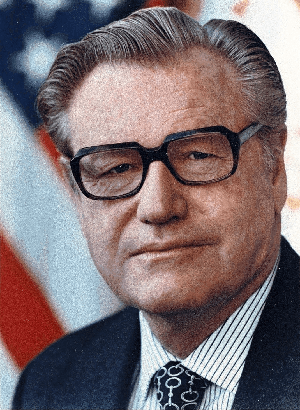 Nelson Rockefeller was a New York State Governor and Vice President of the United States. As Governor he made efforts to protect the environment, increased facilities and personnel for medical care, and created the New York State Council on the Arts. But here at SUNY we can’t help but think that his greatest achievement was the expansion of The State University of New York. Under his leadership, 36 campuses were added to the system and he more than quadrupled state aid to education. It was his work in education that made possible the expansive system that educates nearly half a million people in New York state.
Nelson Rockefeller was a New York State Governor and Vice President of the United States. As Governor he made efforts to protect the environment, increased facilities and personnel for medical care, and created the New York State Council on the Arts. But here at SUNY we can’t help but think that his greatest achievement was the expansion of The State University of New York. Under his leadership, 36 campuses were added to the system and he more than quadrupled state aid to education. It was his work in education that made possible the expansive system that educates nearly half a million people in New York state.


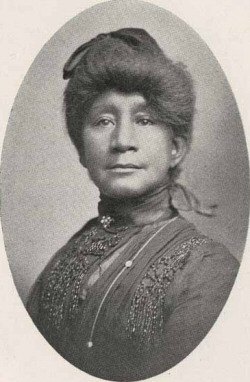


Wow, I had never heard of this remarkable woman Maria Tallchief, amazing dancer.